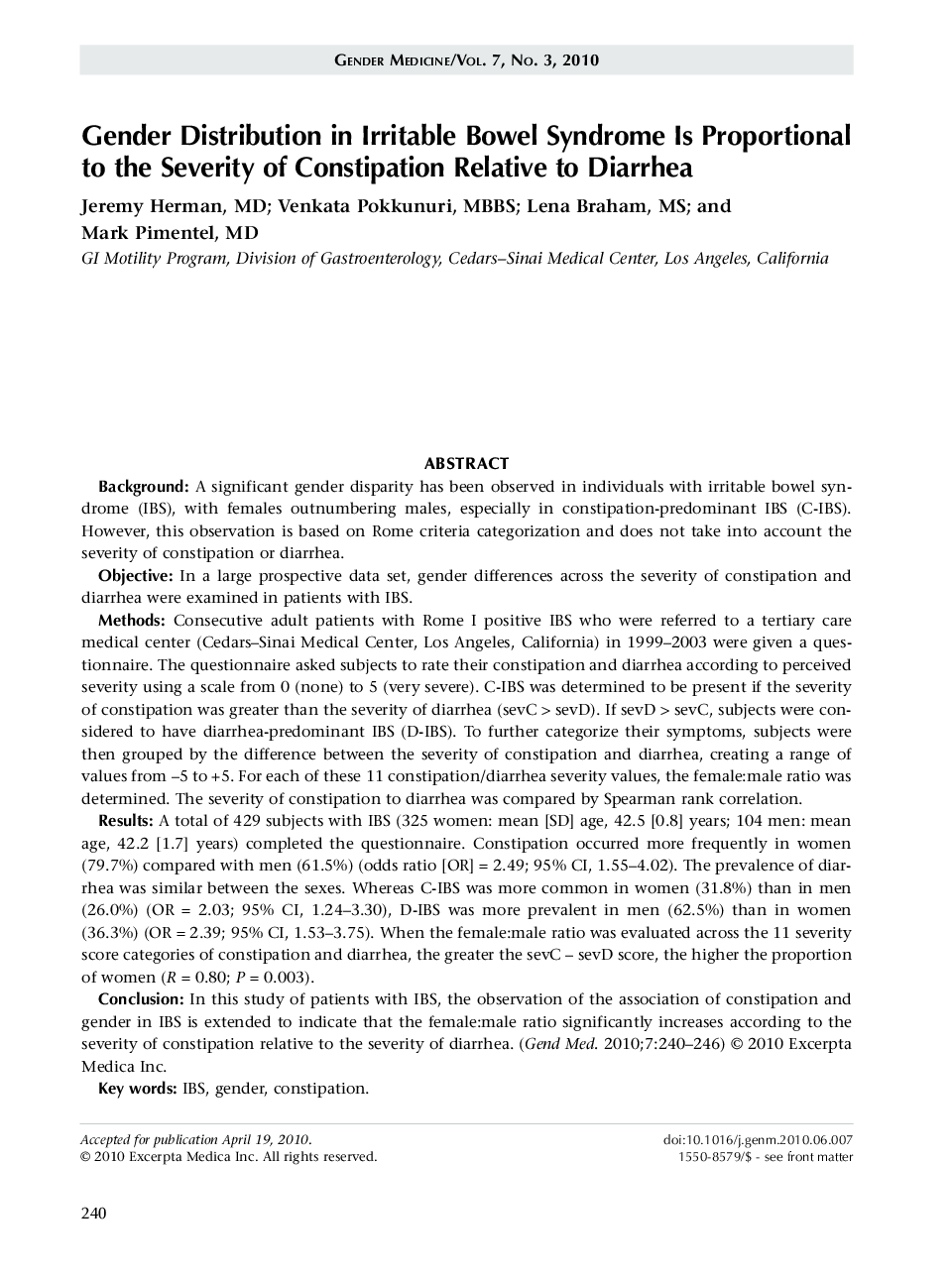| کد مقاله | کد نشریه | سال انتشار | مقاله انگلیسی | نسخه تمام متن |
|---|---|---|---|---|
| 2915748 | 1175588 | 2010 | 7 صفحه PDF | دانلود رایگان |

Background: A significant gender disparity has been observed in individuals with irritable bowel syndrome (IBS), with females outnumbering males, especially in constipation-predominant IBS (C-IBS). However, this observation is based on Rome criteria categorization and does not take into account the severity of constipation or diarrhea.Objective: In a large prospective data set, gender differences across the severity of constipation and diarrhea were examined in patients with IBS.Methods: Consecutive adult patients with Rome I positive IBS who were referred to a tertiary care medical center (Cedars-Sinai Medical Center, Los Angeles, California) in 1999–2003 were given a questionnaire. The questionnaire asked subjects to rate their constipation and diarrhea according to perceived severity using a scale from 0 (none) to 5 (very severe). C-IBS was determined to be present if the severity of constipation was greater than the severity of diarrhea (sevC > sevD). If sevD > sevC, subjects were considered to have diarrhea-predominant IBS (D-IBS). To further categorize their symptoms, subjects were then grouped by the difference between the severity of constipation and diarrhea, creating a range of values from −5 to +5. For each of these 11 constipation/diarrhea severity values, the female:male ratio was determined. The severity of constipation to diarrhea was compared by Spearman rank correlation.Results: A total of 429 subjects with IBS (325 women: mean [SD] age, 42.5 [0.8] years; 104 men: mean age, 42.2 [1.7] years) completed the questionnaire. Constipation occurred more frequently in women (79.7%) compared with men (61.5%) (odds ratio [OR] = 2.49; 95% CI, 1.55–4.02). The prevalence of diarrhea was similar between the sexes. Whereas C-IBS was more common in women (31.8%) than in men (26.0%) (OR = 2.03; 95% CI, 1.24–3.30), D-IBS was more prevalent in men (62.5%) than in women (36.3%) (OR = 2.39; 95% CI, 1.53–3.75). When the female:male ratio was evaluated across the 11 severity score categories of constipation and diarrhea, the greater the sevC — sevD score, the higher the proportion of women (R = 0.80; P = 0.003).Conclusion: In this study of patients with IBS, the observation of the association of constipation and gender in IBS is extended to indicate that the female:male ratio significantly increases according to the severity of constipation relative to the severity of diarrhea.
Journal: Gender Medicine - Volume 7, Issue 3, June 2010, Pages 240-246